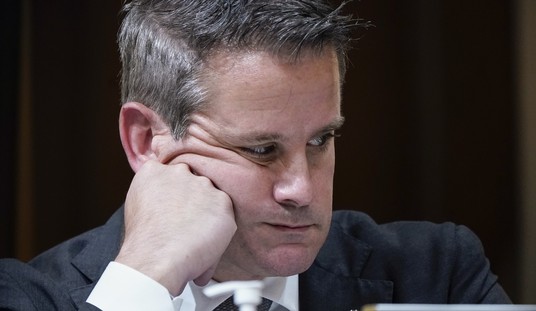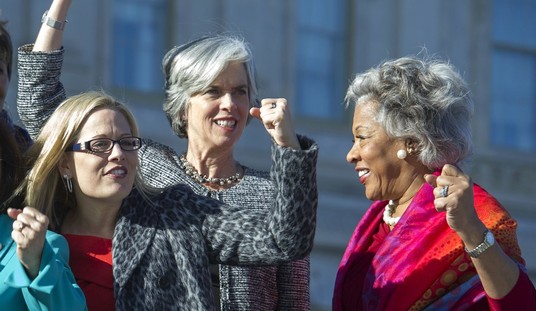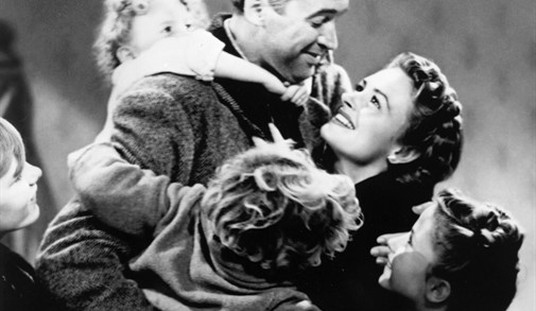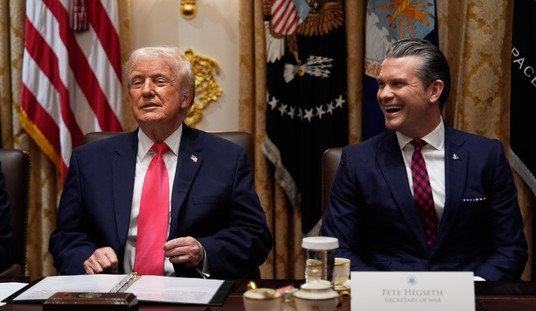It is that time again, mixing mourning and gratitude, to mark the birthday of Martin Luther King Jr. And now we can gather at his still new memorial in Washington.
Washington is a city of monuments, as a national capital should be. And was meant to be from its beginning. For the city's intersecting avenues left room for monuments to come.
Those now familiar memorials reflect the trials and triumphs through which the republic has passed, and sustain us for the tests ahead. Each reflects its time, and the legacy its time has left to the next. Like an architectural text, they run the gamut from Early Federal to Blank Modern.
The Washington Monument rises, as Washington himself did, over the whole of the enterprise, whether making war or peace, creating a republic or nation, struggling on behalf of a revolutionary cause or framing a constitution.
The architecture of his monument reflects Washington's own towering vision--and faith. His eye, like that atop the pyramid on the reverse of the Great Seal, still seems to watch over us.
The Jefferson Memorial is a graceful testament to the other pole of the American experiment. In the spirit of the 18th century, his memorial is a temple dedicated to Reason. And the quotations selected for it do well to reflect the mind and soul of the most eloquent and seeking of the Founding Fathers: "I have sworn upon the altar of God eternal hostility against every form of tyranny over the mind of man.'
Still the most sublime is the Lincoln Memorial. No one can stand there at midnight in a miasmic Washington summer, gazing up on Daniel Chester French's great yet intimate image of the seated Lincoln, proof that stone can be turned into compassion, and not feel some intimation of the sacrifice this Father Abraham was called on to make for freedom -- the sacrifice of his children.
Recommended
There was no more fitting place for a black preacher out of the deep South in the midst of the country's second great struggle for emancipation to declare that he still had a dream for America, not just for his children but for all America's children:
"I have a dream that my four little children will one day live in a nation where they will not be judged by the color of their skin but by the content of their character. ... I have a dream that one day the sons of former slaves and the sons of former slave owners will be able to sit down together at the table of brotherhood...."
Black and white together, equal in humanity, equal before the law and in the eyes of God.
One could sense Father Abraham looking over Martin Luther King's shoulder that sweltering late-August day, not just approvingly but with understanding. The understanding that sacrifice always lies ahead in freedom's road.
Each generation leaves its own marker on that road, its own monument. Whether it is simple and moving, or an ornate tribute to vainglory. Each reflects the spirit of its times.
For there is an architecture of the spirit, too, and to go from the Lincoln Memorial to the newest addition to Washington's monument row, the King Memorial, is to see a sad commentary on what has happened to the national spirit.
Here there is no intimacy, no beseeching eyes of Father Abraham, but a great idol that does not elevate but dwarfs those who pass by. Arms folded, its blunt, expressionless features only glower. It proclaims not peace but menace. Maoist art has come to America.
The designers couldn't even get the monument's most prominent quotation from Dr. King right, twisting his words to make them celebrate himself rather than his cause. They took a passage from one of Dr. King's speeches that disavow any sense of self-promotion and turned it into a celebration of self: "I was a drum major for justice, peace and righteousness."
Or as Maya Angelou put it in a moment of perception, they've made Dr. King sound like "an arrogant twit." This isn't editing, it's butchery. Any newspaperman knows how that works, or rather doesn't.
It's not just this quote that needs correcting, or maybe effacing, but the whole misconceived monument. So we can begin anew to honor the preacher's memory. And all-embracing vision. Then again, in its own way this great unfeeling idol and its vivisected language are an accurate, and telling, reflection of our own mediocre times. Damningly accurate, all too telling.

























Join the conversation as a VIP Member